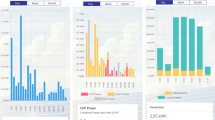Abstract
Large IT systems are often acquired in a tender process where the customer states the system requirements, a number of suppliers submit their proposals, and the customer selects one of them. Usually the supplier uses an existing system as the basis for his proposal. He adapts it more or less to the customer’s requirements. This paper is a study of a specific tender process. The customer was a Danish municipality that supplied electrical power, water, gas, garbage collection, etc. for around 100,000 households. The customer wanted a new system for meter inspection, invoicing, planning the meter inspector’s routes, etc. We have studied the requirements, how they were perceived by the suppliers, and how they were intended by the customer. The main findings are that the parties didn’t understand each other, although the suppliers sometimes pretended that they did so. One consequence was that the business goals pursued by the customer were not properly achieved. Among the causes of this were an excessively democratic elicitation process and an inadequate use of requirement techniques, particularly use cases. There were also issues that the existing requirement techniques couldn’t deal with, for instance integration with future systems.

Similar content being viewed by others
References
Albert C, Brownsword L (2002) Meeting the challenges of commercial-off-the-shelf (COTS) products. In: Dean J, Gravel A (eds) ICCBSS 2002, LNCS 2255, pp 10–20
Balk LD, Kedia A (2000) PPT: a COTS integration case study. In: Proceedings of the international conference on software engineering, ICSE 2000, pp 42–49
Boehm B, Abts C (1999) COTS integration: plug and pray? IEEE Computer, Jan 1999, pp 135–138
Bonnerup E (2001) Experiences from government IT projects—how to do it better. Teknologiraadet, March 2001. (In Danish)
Cockburn A (2000) Writing effective use cases. Addison-Wesley
Constantine L, Lockwood LAD (2001) Structure and style in use cases for user interface design. In: Harmelen MV (ed) Object modeling and user interface design. Addison-Wesley
Feblowitz MD, Greenspan SJ (1998) Scenario-based analysis of COTS acquisition impacts. Requirements Engineering 1998, 3, pp 182–201
Gorton I, Liu A (2002) Streamlining the acquisition process for large-scale COTS middleware components. In: Dean J, Gravel A (eds) ICCBSS 2002, LNCS 2255, pp 122–131
Gotel OCZ, Finkelstein ACW (1994) An analysis of the requirements traceability problem. In: Proceedings of the international conference on requirements engineering, ICRE 1994, pp 94–101
Guo J (2002) Interoperability technology assessment. Elsevier Science, Electronic notes, vol 65, no 4
IEEE Guide to Software Requirements specifications. ANSI/IEEE Std. 830–1993 or 1998
Lauesen S (2002) Software requirements—styles and techniques. Addison-Wesley
Lauesen S (2003) Task descriptions as functional requirements. IEEE Software, March/April 2003, pp 58–65
Lauesen S (2004) COTS tenders and integration requirements. In: Proceedings of the 12th international requirements engineering conference, Kyoto, RE 2004, pp 166–175. (An expanded version is accepted for publication in Requirements Engineering Journal, around November 2005)
Lauesen S (2005) User interface design—a software engineering perspective. Addison-Wesley
Lauesen S, Vium JP (2003) Experiences from an EU tender process—successes and failures. (Includes a detailed account for each supplier of his perception of the process, in Danish) http://www.itu.dk/people/slauesen/Papers/Leverandorvalg9.pdf
Lauesen S, Vium JP (2004) Experiences from a tender process. In: Regnell et al (ed) Proceedings of REFSQ’04, Riga, Essener Informatik Beitrage, ISBN 3–922602–91–6, pp 29–46
Liu A, Gorton I (2003) Accelerating COTS middleware acquisition: the i-Mate process. IEEE Software, March/April 2003, pp 72–79
Maiden NA, Ncube C (1998) Acquiring COTS software selection requirements. IEEE Software, March/April 1998, pp 46–56
Ncube C, Dean JC (2002) The limitations of current decision-making techniques in the procurement of COTS software components. In: Dean J, Gravel A (eds) ICCBSS 2002, LNCS 2255, pp 176–187
Author information
Authors and Affiliations
Corresponding author
Rights and permissions
About this article
Cite this article
Lauesen, S., Vium, J.P. Communication gaps in a tender process. Requirements Eng 10, 247–261 (2005). https://doi.org/10.1007/s00766-005-0009-2
Received:
Accepted:
Published:
Issue Date:
DOI: https://doi.org/10.1007/s00766-005-0009-2




